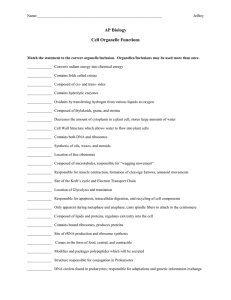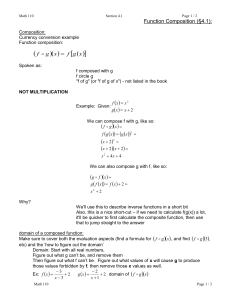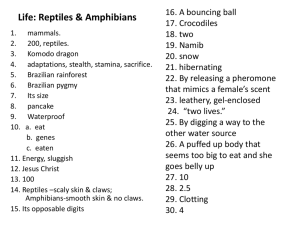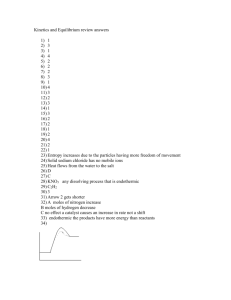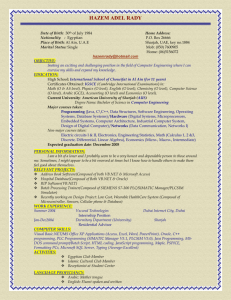Version B Exam Review Answers
advertisement
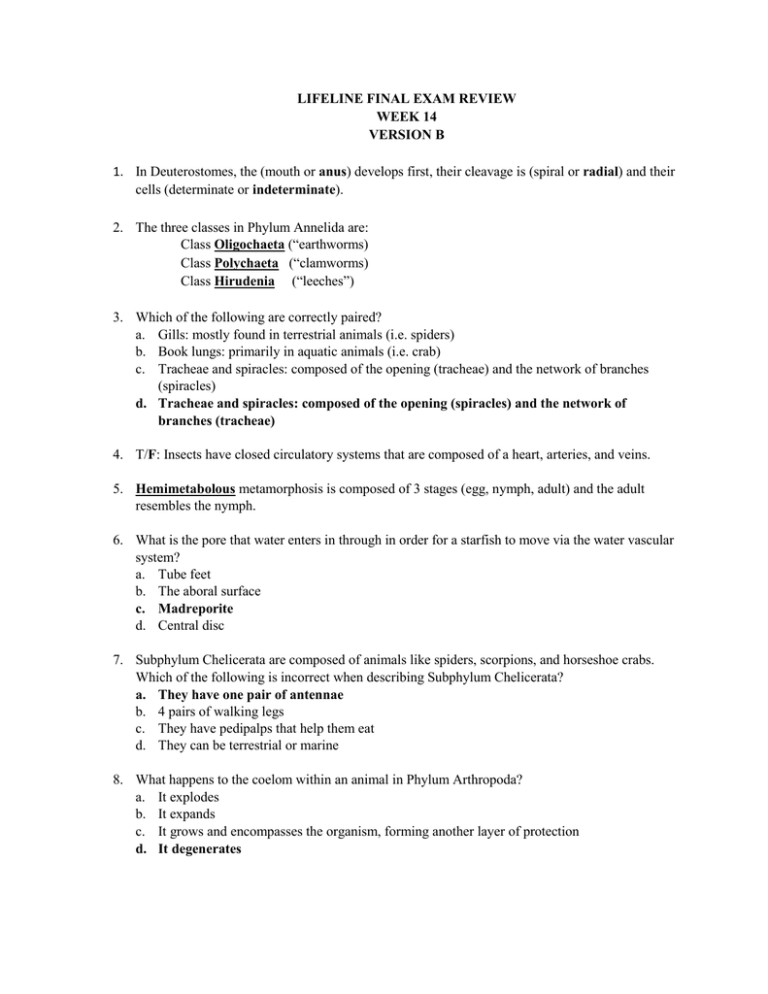
LIFELINE FINAL EXAM REVIEW WEEK 14 VERSION B 1. In Deuterostomes, the (mouth or anus) develops first, their cleavage is (spiral or radial) and their cells (determinate or indeterminate). 2. The three classes in Phylum Annelida are: Class Oligochaeta (“earthworms) Class Polychaeta (“clamworms) Class Hirudenia (“leeches”) 3. Which of the following are correctly paired? a. Gills: mostly found in terrestrial animals (i.e. spiders) b. Book lungs: primarily in aquatic animals (i.e. crab) c. Tracheae and spiracles: composed of the opening (tracheae) and the network of branches (spiracles) d. Tracheae and spiracles: composed of the opening (spiracles) and the network of branches (tracheae) 4. T/F: Insects have closed circulatory systems that are composed of a heart, arteries, and veins. 5. Hemimetabolous metamorphosis is composed of 3 stages (egg, nymph, adult) and the adult resembles the nymph. 6. What is the pore that water enters in through in order for a starfish to move via the water vascular system? a. Tube feet b. The aboral surface c. Madreporite d. Central disc 7. Subphylum Chelicerata are composed of animals like spiders, scorpions, and horseshoe crabs. Which of the following is incorrect when describing Subphylum Chelicerata? a. They have one pair of antennae b. 4 pairs of walking legs c. They have pedipalps that help them eat d. They can be terrestrial or marine 8. What happens to the coelom within an animal in Phylum Arthropoda? a. It explodes b. It expands c. It grows and encompasses the organism, forming another layer of protection d. It degenerates 9. (Centipedes or Millipedes) have poison glands, have 2 legs per segment, and are carnivores. 10. Metamerism means to show true segmentation. 11. Protostomes go through (schizocoelous or enterocoelous) development while Deuterostomes go through (schizocoelous or enterocoelous) development. 12. In invertebrate chordates the pharyngeal slits become suspension feeding devices. 13. Explain Hypothesis “A” and Hypothesis “B” for the evolution of vertebrates. Hypothesis “A”: the ancestral vertebrate chordate evolved from a cephalochordate-like animal. Evidence that supports it: cephalochordate adult has all four chordate characteristics and larva or lampreys resemble that of lancelets Hypothesis “B”: the ancestral vertebrate chordate evolved from a urochordate. 14. Which of the following characteristics pertain to Class Chondricthyes? a. Notochord persistent b. 2-chambered heart c. No operculum or swim bladder d. Placoid scales e. All of the above 15. What is the extinct group found in Class Agnatha? Ostracoderms 16. Amplexus is a form of external fertilization in which water is required for the and egg to meet. sperm 17. Under what Class and Order are lizards and snakes categorized? a. Class Reptilia, Order Rynchocephalia b. Class Reptilia, Order Squamata c. Class Reptilia, Order Monotremata d. Class Mammalia, Order Testudines 18. T/F Carinate birds have a flat sternum and as such are classified as flightless birds. Carinate: keeled sternum, flying birds Ratite: flat sternum, flightless birds 19. Explain the terms endothermic and exothermic. Endothermic: Maintain homeostasis through internal metabolic production of heat Exothermic: Body heat is obtained from external sources. Animals use solar energy rather that cellular metabolic reactions for heat. 20. Metatherians and Eutherians are classified under what Subclass? Subclass Theria 21. All of the following are characteristics of Class Aves, except: a. 4-chambered heart b. Notochord persists c. Scales on their legs d. Endothermic
